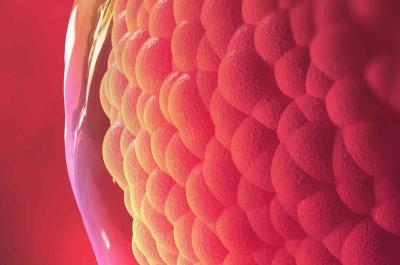
Ovulation is the name of the process that happens usually once in every menstrual cycle when hormone changes trigger an ovary to release an egg. In this article, we look more closely at this process and explain how you use this knowledge to help you to become pregnant. Eggs are contained within follicles in your ovaries and during the follicular phase of each menstrual cycle, one of the eggs is grown and matured.
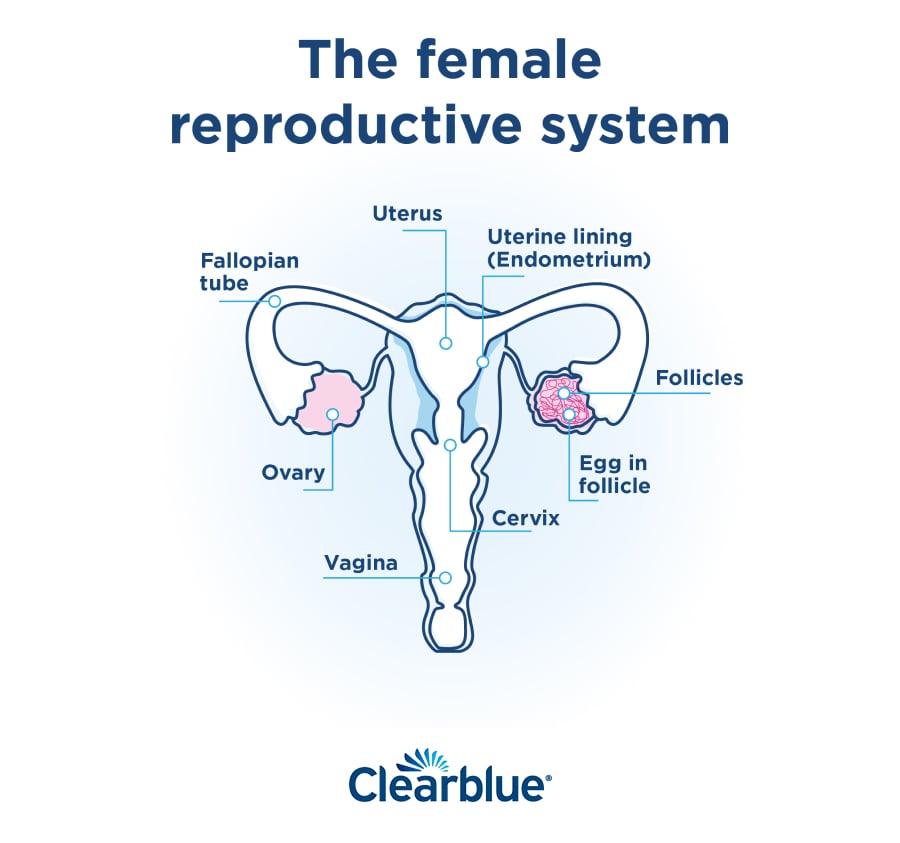
In this article
- What are the stages around ovulation and when do you ovulate?
- What is the difference between ovulation and fertile days?
- When is a woman most fertile?
- When does ovulation occur?
- How do I know if I’m ovulating?
- When do I take an ovulation test?
- How can I know when I’m ovulating?
- How long does ovulation last?
- FAQs about ovulation
- The bottom line
- Ovulation is the process when hormone changes trigger an ovary to release an egg.
- You can only become pregnant if a sperm meets with and fertilizes an egg.
- Ovulation normally occurs 24 to 36 hours after the luteinizing hormone (LH) surge, so identifying this LH surge helps you to determine when you are about to ovulate.
- Sperm can remain active for up to five days, so couples can conceive by having intercourse prior to the egg being released.
- Clearblue Ovulation Tests are at least 99% accurate at detecting the LH surge.
What are the stages around ovulation and when do you ovulate?
Ovulation is the name of one of the 4 stages that typically occur during your menstrual cycle.
1. Follicular phase. The follicular phase is when increasing levels of FSH (Follicle Stimulating Hormone) lead to the maturation of the follicles. Follicles of the ovaries develop and usually one egg fully matures before being released in ovulation. As you approach ovulation, your body produces increasing amounts of a hormone called estrogen, which causes the lining of your uterus to thicken and helps create a sperm friendly environment.
2. Ovulation. These high estrogen levels trigger a sudden increase in another hormone called luteinising hormone (LH). A surge in LH causes the release of the mature egg from the ovary (ovulation) approximately 24-36 hours later, which is why the LH surge is a good predictor of peak fertility. The egg can only be fertilised for up to 24 hours after ovulation. Ovulation typically occurs 12 to 16 days before your next period.
3. Luteal phase. This is the phase between ovulation and the first day of your period. During the luteal phase, progesterone is produced by the corpus luteum (generated by the empty follicle left in the ovary after an egg has been released) and helps thicken the womb lining in preparation to receive a fertilised egg.
4. Menstrual phase. If the egg is not fertilised, then estrogen and progesterone decrease, and the lining of the womb is shed (the egg is lost with it) and your period begins. This marks the start of the next menstrual cycle.
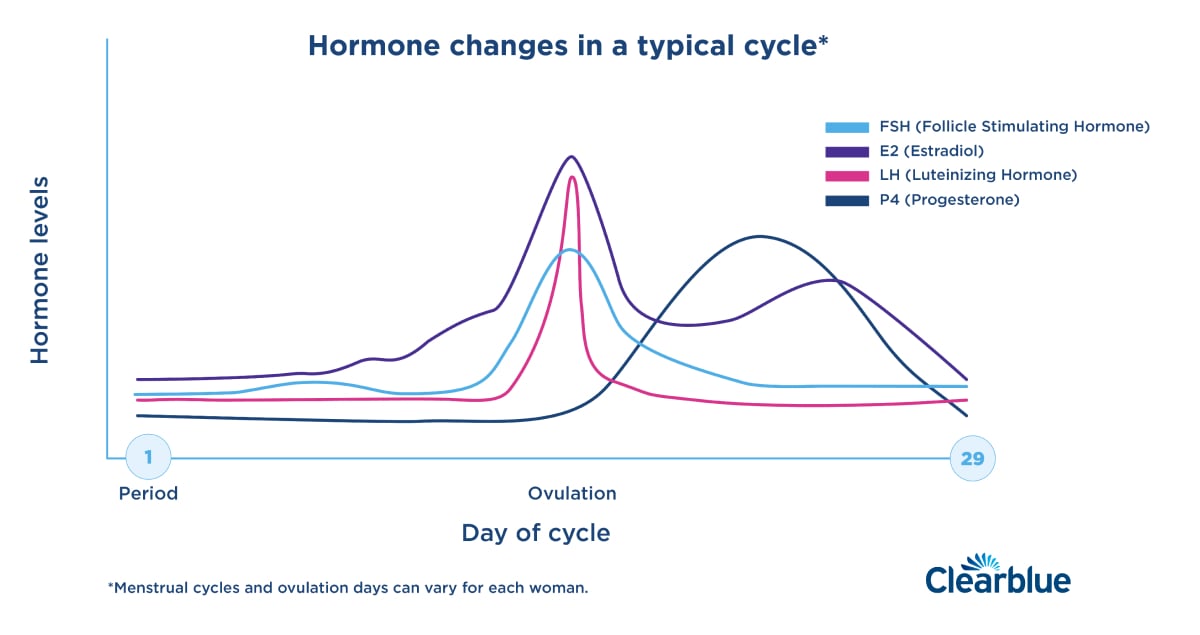
What is the difference between ovulation and fertile days?
Ovulation is when one of your ovaries releases an egg. Fertile days are all the days during your menstrual cycle when you have the ability to become pregnant if you have unprotected sex. While an egg only survives for up to 24 hours, sperm can remain active for up to five days. It may therefore be surprising to learn that a couple can conceive through sex up to five days before the egg is released. The total ‘fertile window’, taking into account the lifetime of both the sperm and the egg, is about six days.
Identification of additional fertile days provides couples with more flexibility to plan sex around their lifestyle and also more opportunities to conceive, which may reduce the pressure that couples can experience when trying to get pregnant.
Can I ovulate more than once during my cycle?
Professor Bill Ledger, Fertility Specialist
Yes, it's possible to ovulate twice but this usually happens at about the same time of the cycle. This is how non-identical twins occur, from ovulation of two separate eggs. It happens more often in women over 35 which is one reason why the older group have more twins (the other is that many IVF clinics will replace two embryos for older patients whereas those under 40 generally have one embryo replaced)
When is a woman most fertile?
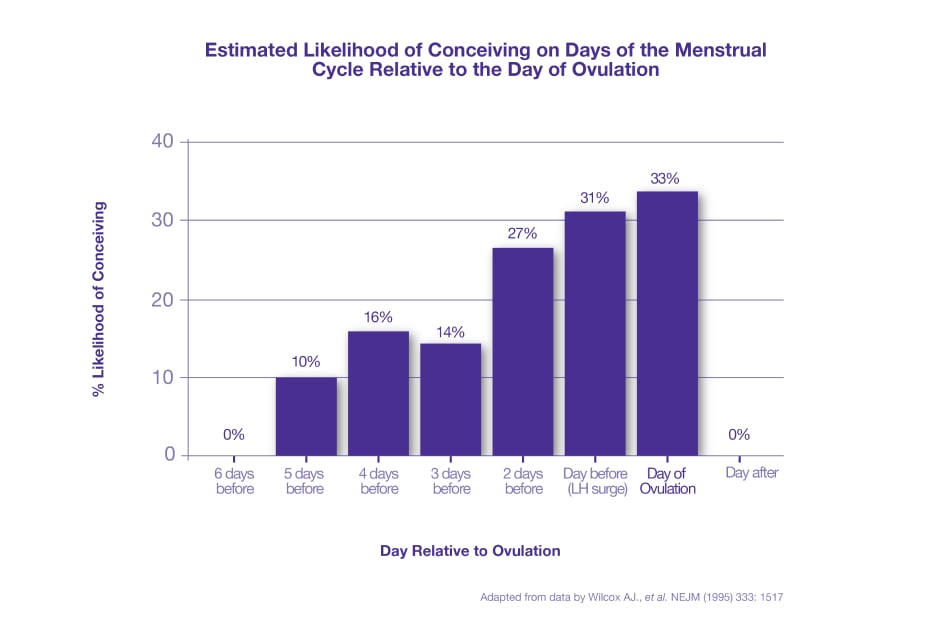
The graph above illustrates there is still a chance to conceive in the days prior to ovulation.
The day of ovulation and the day before are the two days of peak fertility. These days during each cycle are when you are most fertile, and therefore most likely to get pregnant from unprotected sex. There are also a few days before this when you experience high fertility and also have an opportunity to get pregnant. Outside this ‘fertile window’ of about six days, the chances of getting pregnant are low. However, if you don’t want to get pregnant, always make sure you use contraception as there is no safe time to have unprotected sex.
When does ovulation occur?
Ovulation usually happens 12-16 days before the next period. Many women think that they ovulate on day 14 but this is just an average. Most women will actually ovulate on a different day of the menstrual cycle, and this will also vary from cycle to cycle. In fact, menstrual cycles can range anywhere between 23 and 35 days and 52% of can vary by five or more days1.
How do I know if I’m ovulating?
When it comes to physical signs and symptoms of ovulation, some women claim to feel a twinge of pain when they ovulate, but many feel no sensation at all. Others may get some of the physical signs and symptoms2 below that indicate they are ovulating:
- Changes in cervical mucus (i.e., it resembles egg whites) to ovulation discharge article.
- Some pain or cramping
- Bloating
- Tender breasts
- Increased sex desire
- A rise in basal body temperature
When do I take an ovulation test?
If you want to take an ovulation test, but you’re not sure when you should start testing, you can use our “when to take an ovulation test calculator”.
We suggest you wait for your next cycle if you don’t know your cycle length, and note the day your period starts (Day 1) and the length of this cycle before using this online Ovulation Calculator tool*.
*This tool is for guidance purposes. Always use the leaflet provided with your product to work out when to test.
How can I know when I’m ovulating?
The most accurate way to find out when you are most likely to ovulate, is by using an Ovulation Test. Some ovulation tests detect the LH surge to pinpoint your 2 most fertile days but others detect both estrogen and LH providing a wider fertile window.
Other methods can be used such as:
- An ovulation calculator which can be used to determine the most likely day you’ll ovulate. This is done by using the date of your last period and entering your cycle length. It is worth noting that note cycle lengths vary from woman to woman and cycle to cycle1.
- Measuring your basal body temperature.
- Checking your cervical mucus to see when you’re likely to be ovulating.
Clearblue® ovulation tests are at least 99% accurate at detecting the LH surge and maximise your chances of getting pregnant. To get pregnant, it’s important to have sex on your fertile days; if you want to find out when are your most fertile days, it’s important to get to know your own body and your own personal menstrual cycle.
Professor Bill Ledger, Fertility Specialist
Everyone is different and women cannot rely on population averages to understand their own fertility. Understanding when they ovulate is one of the easiest steps that women can take to understanding their fertility, and ovulation tests are the easiest way for women to accurately predict when they will ovulate. Conventional LH tests give couples one to two days advanced warning of ovulation. Clearblue have also developed more advanced products that give women even more information.
I'm not sure I ovulate every month, what might cause this?
Professor Michael Thomas
Women sometimes don't ovulate every month for a number of reasons. If your cycles are usually over 35 days, you may not be ovulating consistently or not at all. The majority of women who do not ovulate and are not pregnant, may have Polycystic Ovary Syndrome (PCOS). PCOS is a condition that you are born with and can cause a woman not to ovulate (release an egg) on a regular and consistent basis. These women may also have adult acne or an increase in hair growth above the lip or below the chin. On ultrasound, the ovaries may be seen to have many small cysts inside them that remain at a small size. Other conditions that can cause you not to ovulate include low thyroid function (hypothyroidism), high prolactin production (hyperprolactinemia), and during the time prior to the menopause (perimenopause). If you feel that you are not ovulating consistently, you should see your health care provider.
Read more about Anovulation.
How long does ovulation last?
As ovulation is the release of an egg from an ovary it’s almost instantaneous – the follicle bursts and the egg is propelled very quickly into the Fallopian tube.
FAQs about ovulation
Can you get pregnant if you had sex before ovulation?
You are at your most fertile the day before and the day of ovulation. Since sperm can live up to 5 days after sex, if you have sex within this window before you ovulate, you can get pregnant.
Can you get pregnant if you are not ovulating?
No. Anovulation — when you don’t release an egg — can happen as a one off (for example during a stressful period) or can be chronic and caused by a medical condition like polycystic ovary syndrome (PCOS). If you are not ovulating regularly, see a doctor.
How can I tell if I’m ovulating?
Sometimes you can feel a little pain or cramping around the time you ovulate, some women experience other physical signs and symptoms such as bloating, tender breasts or changes in their cervical mucus, but some women feel nothing at all. The most accurate way to find out when you are most likely to ovulate, is by using an Ovulation Test.
What exactly happens when a woman is ovulating?
When you ovulate, one of your ovaries releases an egg, which can then be fertilised by sperm if you’ve had unprotected sex within the past 5 days.
The bottom line
Ovulation is essential to get pregnant, as your ovary needs to release an egg to be fertilised. Sometimes you can tell if you’re ovulating by experiencing some of the signs and symptoms mentioned above, but it is important to note that some women do not experience anything at all.
- Soumpasis, I., Grace, B., & Johnson, S. (2020). Real-life insights on menstrual cycles and ovulation using big data. Human Reproduction Open, 2020(2), hoaa011.
- https://www.nhs.uk/common-health-questions/sexual-health/how-can-i-tell-when-i-am-ovulating
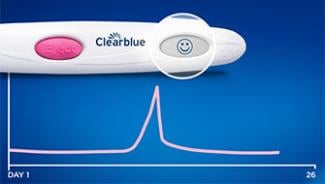
Digital Ovulation Test: pinpoints your 2 most fertile days
In every cycle there are only a few days when a woman can conceive, so having sex on these days is very important if you are trying to get pregnant.

What’s your menopause stage?
The menopause journey has stages. Learn about yours with Clearblue® Menopause Stage Indicator – 5 easy-to-use tests & a FREE app.


